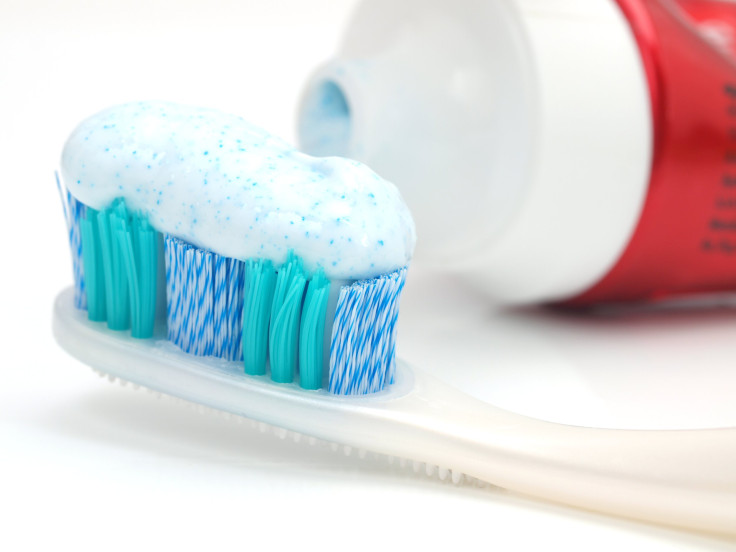Crest Agrees To Remove Polyethylene From Its Toothpaste; But Why Was There Plastic In There In The First Place?

You know those fun little beads found in Crest toothpaste? Well it turns out they are actually made of a non-biodegradable plastic. After one too many dentists complained of finding bright blue plastic embedded in their patients' gums, Procter & Gamble (P&G) has finally agreed to remove the completely unnecessary and possibly dangerous extra ingredient. But they aren’t the first company accused of putting plastic in “healthy” products, so we ask the question: Why was plastic there in the first place?
Crest manufacturer P&G promised that within six months you may see the very last microbead-filled Crest toothpaste, KDVR reported. Without a doubt, toothpaste is good for dental health. It helps to remove and reduce the buildup of plaque and prevents oral conditions, such as gingivitis and cavities. However, even P&G itself admitted that the plastic microbread had absolutely nothing to do with improving oral hygiene. Instead, the company cited the plastic beads' main purpose as aesthetics, describing polyethylene as “a safe, inactive ingredient used to provide color.”
While the ingredient hasn’t exactly been proven safe, the shared consensus among American dentists is that embedding tiny bits of plastic in one's gums is never a good thing. "If it was left in there [in the gums], it could potentially cause some gingival irritation," Dr. Brian Moore, a dentist in Kentucky told KJRH. "Any time you have any foreign body in the pocket around the tooth, it's a breeding ground for bacteria."
Surprisingly, P&G agreed. “While the ingredient in question is … part of an enjoyable brushing experience for millions of consumers with no issues, we understand there is a growing preference for us to remove this ingredient, so we will,” the company told ABC15.
The unnecessary addition of plastic into many household products and even foods has been addressed for some time now. Earlier this year, Illinois, New York, New Jersey, Ohio, and California introduced bills to ban plastic microbeads from body scrubs and dental products, citing the tiny plastic’s dangerous ability to infiltrate waterways and our bodies. Microbreads were found in all five of the Great Lakes when scientists dragged their surfaces both in 2012 and in 2013, CBC News reported. As the circle of life goes, scientists predict that these beads will find their way back into the human body via the consumption of polluted fish. That is if you didn’t already accidentally swallow the beads when brushing.
While P&G's agreement will remove plastic from our toothpaste, and hopefully the passage of the states’ bills will ban them from beauty products, there is still the question of what’s being done to all the plastic in American foods.
Earlier this year, Subway faced a mountain of controversy when it came to light that one of the “bleaching agents” in the bread was indeed the same plastic used in a variety of yoga mats and rain boots. Due to increasing pressure from the public and government officials, Subway soon removed the azodicarbonamide from all its bread, the Daily Mail reported. Unfortunately, Subway was not alone in using azodicarbonamide as a bleaching agent in dough. Reuters revealed that hundreds of U.S. foods contain the plastic derivative, including: bread, tortillas, and pizza.



























